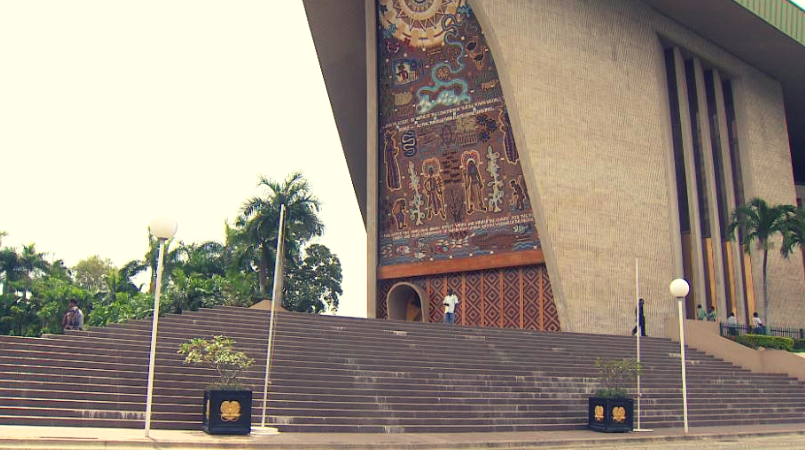
By this Thursday, May 9th, Papua New Guineans should be able to know if the Vote of No Confidence will take place.
Section 145 of the Constitution has provision for motions of no confidence against any Minister; in this case the Prime Minister.
According to Section 145 of the Constitution, the Vote of No Confidence motion is moved during the 18 months commencing on the date of the appointment of the Prime Minister.
This motion is moved by any member of parliament against the Prime Minister, and must be supported by a number of members of Parliament being not less than one-tenth of the total number of seats in the House; at least 12 members of parliament must support the motion.
The motion then goes before the Parliament Business Committee for vetting, meaning the reasons behind the motion are weighed out before it can say whether or not a Vote of No Confidence can happen.
For this week, the Speaker will table it tomorrow (Wednesday) before the Parliament committee at 1pm. The committee will then check the notice is in order. It will then be listed on the notice paper and announced to Parilament on Thursday. Parliament will be adjourned to next Thursday when the vote will actually take place.
The current parliament is the 10th since independence.
Out of the past nine parliaments, six have had Prime Ministers either removed by a Vote of No Confidence or resigned because of the threat of a Vote of No Confidence.
Of the six VoNC episodes, three were successful in changing the Prime Minister and one failed.
Two Prime Ministers resigned in fear of losing the VONC.
Grand Chief Sir Michael Somare and Peter O’Neill are the only Prime Ministers in PNG’s history to have served full terms as PM.
Most Prime Ministers served more than 2 years in office before being removed by Vote of no confidence.
History of VONC in PNG Parliament
- 1st Parliament: 1975 – 1977 (2 year term) Sir Michael Somare appointed PM by the Constitution;
- 2nd Parliament: 1977 – 1982 Somare elected PM by Parliament following 1st General Election, served 32 months (2.6 years) before being removed by vote of no confidence and replaced by Chan who served 2.3 years up to the next elections;
- 3rd Parliament: 1982 – 1987 Somare elected PM following General Elections, served 40 months (3.3 years) before being removed by vote of no confidence and replaced by Paias Wingti who served 1.7 years up to the next elections;
- 4th Parliament: 1987-1992 Wingti re-elected PM following General Elections, served 12 months before being removed by vote of no confidence and replaced by Rabbie Namaliu who served 4 years up to the next elections;
- 5th Parliament: 1992 – 1997 Wingti elected PM following General Elections, served 15 months before resigning and re-elected, served 11 months before Supreme Court voided his re-election. Chan elected to fill vacancy served 2.5 years before being forced to resign. John Giheno served as acting PM for 4 months up to 1997 General Elections
- 6th Parliament: 1997-2002 Skate elected PM following General Elections, served 2 years before resigning to avoid a motion of no confidence, replaced by Sir Mekere who served up to 2002 General Elections
- 7th Parliament: 2002-2007 Somare elected PM following General Elections, served full five years in office.
- 8th Parliament: 2007-2012 Somare elected PM following General Elections, served 4.2 years before illegally removed by Parliament after declaring vacancy, replaced by O’Neill who served 1 year up to 2012 General Elections.
- 9th Parliament: 2012-2017 O’Neill elected PM following General Elections. O’Neill survived vote of no confidence 56 votes to 21 in 2016 and remained PM.
- 10th Parliament: 2017 – 2019. PM Peter O’Neill elected PM following 2017 General Elections. The opposition signed an agreement to move VONC motion against PM O’Neill.
